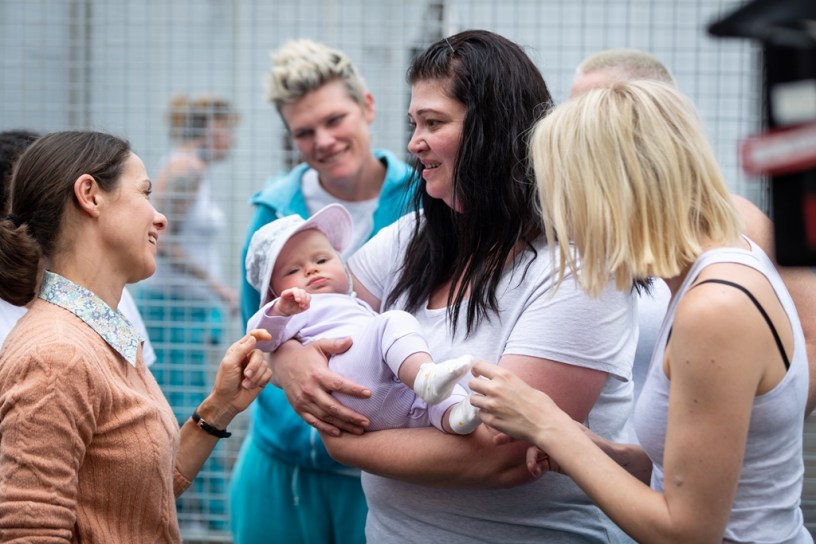‘Wentworth.’
Arguably the most stressed players in the broadcasting sector, Foxtel, the Seven and Nine Networks and Network 10 are calling for the scrapping of local content quota obligations.
In its submission to the government’s ‘Supporting Australian Stories on Our Screens’ options paper review, Foxtel advocates option 4, which would result in platform-neutral deregulation and revising the existing incentives for Australian content.
The pay TV platform wants to abolish the requirement to invest at least 10 per cent of its total program expenditure on new Australian drama, arguing that would provide more flexibility to invest across a variety of genres.
“Removing regulation provides an equal playing field, offering traditional broadcasters the opportunity to further innovate and modernise in order to compete with international content providers,” Foxtel said.
Free TV Australia, which reps metropolitan and regional broadcaster, favours deregulation of quota obligations, with the exception of the overall 55 per cent Australian transmission quota, coupled with robust production support and incentives.
Instead, it proposes a simplified points system which it says would give commercial free-to-air broadcasters “greater flexibility” in how they meet their regulated obligations.
“We need to get away from a regulatory approach that compels broadcasters to compete with each other, not only in relation to the same type of content, but in the same time-slots, and regardless of whether there is an audience for that content or not,” said Free TV CEO Bridget Fair.
Foxtel rightly points to its long history of commissioning Foxtel Originals, some of which have sold to global players including Netflix (Wentworth and Secret City) and Amazon (Picnic at Hanging Rock) as well as The Kettering Incident and A Place to Call Home.
But the platform seeks a review of the Screen Australia-mandated licence fee of $440,000 per hour for drama, arguing that excludes low cost production models and platforms that do not subscribe to the advertiser-funded mass audience approach.
While Foxtel is keen to see the TV Producer Offset raised to 40 per cent, it asks for the scope to be expanded to include lifestyle, infotainment and magazine genres such as Selling Houses, Love It or List It and Gogglebox Australia.
Source: Free TV Australia.
Free TV argues that a single combined points system for documentary, children’s content and adult drama would have these benefits:
o Incentivise programming in these genres on linear television but in a manner that gives broadcasters increased flexibility to determine the best mix for their audience and business models in terms of both format and volume
o Incentivise drama content with higher production values and global appeal
o Reduce the burden on broadcasters by allowing them to more efficiently manage their content.
Illustrating the challenging environment for commercial networks, their TV advertising revenues have fallen by about 3 per cent a year in the last five years. Last year was even worse, a 5.1 per cent decrease from $3.626 billion to $3.44 billion.
While their BVOD revenues increased by 38.2 per cent in same period, that was off a low base, rising from $90.3 million to $124.8 million.
Source: Free TV Australia.
In common with other stakeholders, Free TV supports raising the Producer Offset for TV drama and documentary to 40 per cent, removing the 65-episode eligibility cap and harmonising the Location and PDV Offsets at 30 per cent.
Making the case for scrapping the quota for C and P shows, Free TV pointed out the average child audience per show shrank to fewer than 1,000 last year and the percentage of time spent viewing children’s programming on catch-up services is less than 1 per cent.
“This review comes at a critical time when the industry is facing extraordinary challenges. The need for significant reform to ensure our sector is sustainable has never been more needed,” its submission states.
“As audiences migrate to different, unregulated platforms, particularly for adult drama and children’s content, broadcasters’ business models have been increasingly challenged.
“As well as competition for viewers and advertising revenue, the costs of producing content are also increasing. The most recent Screen Australia Drama Report found that the average cost per hour for all titles had increased by 7 per cent to $760,000 per hour.
“As the Options Paper acknowledges, the status quo is unsustainable. Ultimately, this could lead to the market being unable to support three competing commercial free-to-air broadcasters which would in turn lead to falling production levels and less Australian content overall.”




